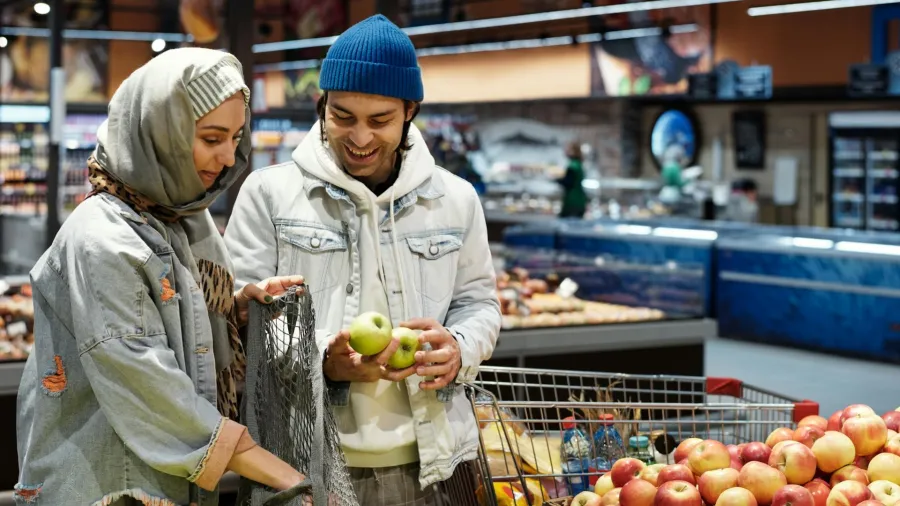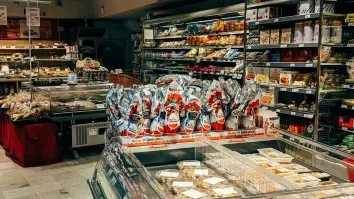
How can grocery stores thrive in the face of digital shopping?
Foot traffic has dropped 6.9% in the past year.
Traditional grocery retailers should reinvent their operating model for the digital and physical age, including modernising supply chains, as foot traffic falls and the shift to digital shopping takes hold, according to London-based accounting firm Deloitte Touche Tohmatsu Ltd.
“Traditional grocery retailers are pulling out all the stops to drive up footfall, but it may take more than sushi bars and fresh-squeezed juice to win customers back,” Danny Edsall, a principal at Deloitte Consulting LLP, and Adgild Hop, a partner and market lead for retail in North South Europe, said in a January report.
“However, trying to shift to digital-first strategies whilst holding on to old business models can hinder their progress,” they said. “This may leave many retailers in a pressure-cooker scenario.”
From August 2023 to August 2024, visits to the top 10 grocery retailers fell 6.9% to 3.95 million, according to the report, citing Deloitte Consumer Signals data from October 2024.
It noted that the traditional image of a typical grocery shopper—a suburban parent with predictable habits—is no longer accurate. Today’s consumers vary widely in age, household composition, ethnicity, and shopping preferences.
It said traditional life milestones such as education, marriage, and homeownership have become less predictable, contributing to a more complex consumer behavior.
The number of online-only shoppers declined 4.9%, whilst their overall spending fell 1.42%. However, total online grocery spending and transactions rose 4.45% and 3.85%, respectively.
“Although fewer people are shopping exclusively online, those who do are spending more, potentially due to inflation and rising grocery costs,” according to the report.
Hybrid shopping—where consumers shop both online and in-store—appears to be increasing and may be balancing out the decline in online-only shoppers, with the overall number of online shoppers dropping only slightly by 0.2%.
In-store shopping remained dominant, accounting for 90% of sales, but pick-up and delivery channels are expanding rapidly, with delivery sales increasing 34% year on year.
To meet consumer expectations, grocery retailers have transformed into supercenters that sell a variety of products from all over the world, whether it’s mangoes from Mexico or artisanal cheeses from France, Edsall and Hop said.
However, the logistics and economics of delivering groceries efficiently remain challenging. If delivery costs exceed the value of goods, retailers should rethink their strategies to protect profitability.
Traditional grocery retailers are also trying to improve foot traffic by offering in-store experiences such as sushi bars, fresh juice, and complementary services like salons, clinics, and restaurants.
For example, retailers like Eataly offer high-quality cuisine and ingredients, creating an emotional connection with customers that led to a 9% revenue increase in 2023.
Some retailers have also started producing private-label products in-house and controlling more of the supply chain to reduce costs, increase profit margins, and ensure quality. Large retailers such as Kroger, Costco, Walmart, and Amazon have invested heavily in this model.
Mergers and acquisitions have also become important for retailers under margin pressure and competitive threat.
“The grocery industry has reached a boiling-over point, and leaders should take decisive action to protect their margins and future growth,” Deloitte said. “The future belongs to those willing to rethink their operations, tap into hidden assets, and take calculated risks.”
Questions to ponder:
1. How can grocery retailers create in-store experiences to keep customers in a digital-first world?
2. How can they rewire their supply chains for digitisation?

















 Advertise
Advertise





